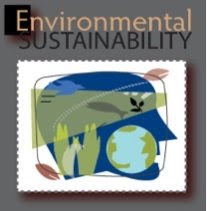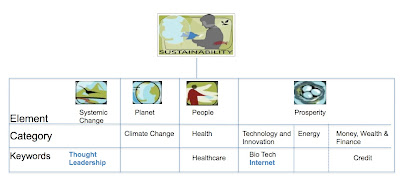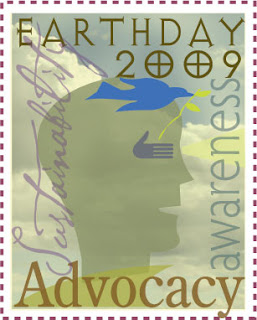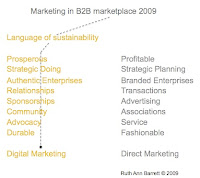Sustainability and Green IT: A National Policy Perspective
Category Archives: Uncategorized
Dell beats HP and IBM on CSI Benchmark Report
Technology Business Research’s Brad Allen, director of the Global Business Sustainability Service, stated that “CSI leadership underscores a corporation’s commitment to sustainability in its business models and practices. By embedding sustainability into the core business fabric, organizations gain competitive advantage and environmental equity, contributing to overall corporate value.”
So what’s CSI Leadership all about?
The inaugural Corporate Sustainability Index (CSI) Benchmark Report evaluates the environmental metrics of 40 companies within the computer hardware, software, professional services, and network and telecommunications sectors.
With an overall score of 317.9, Dell bested firms such as British Telecom (265.2), IBM (NYSE: IBM)(258.5), and Hewlett-Packard (NYSE: HPQ) (255.1), scoring particularly well in areas of renewable energy, recycling and embedded sustainability strategy.
See more complete article at sustainable business.com.
Searching But Not Finding

A must read is Deloitte study, Finding the Green in Today’s Shoppers: Sustainability Trends and New Shopper Insights.
In retail it’s not just location, location, location. It’s also about price and availability and in terms of the latter, companies marketing green and sustainability products and services need to listen up to a major finding in the study:
Sustainability’s appeal to shoppers is already large. Nearly all shoppers surveyed would buy green; nearly two thirds actively seek it on each shopping trip. However, since only 22 percent of the shoppers surveyed actually ?nd and buy the green products that interest them, the latent, unful?lled demand for sustainability-enhanced products must be immense. “
And as a reminder, these “Green Shoppers are a large, high-value segment of importance to retailers and many manufacturers. Green shoppers visit stores more frequently, buy more products on each trip, and demonstrate more brand and retailer loyalty.”
The already converted among consumers are NOT finding reliable information at point of purchase and are leaving empty handed or worse yet, with ecologically-impaired products. Maybe it’s time for the green business leaders to take on a less “conversion” language, be more inclusive, and make substantial investments in POP and Web-based consumer education programs. And do so in concert with members of the supply chain, especially the sales channels.
I recall hearing in a speech a year ago by Mark Lee, CEO of the consulting company, sustainability.com that work at the level of consumer education was a situation waiting to happen. It may be that as we move from “branded organizations” to a value on “authentic organizations” marketing resources will be invested in the right places and with more fact, and less emotion.
We started EarthSayers.tv, the voices of sustainability, to bring educational resources, the unfiltered voices of experts, business leaders, and citizens from all walks of life to those initiating a search, and beginning the learning cycle, on Google for the term, sustainability. We wanted to focus on finding, rather than searching, while using the power of search engines such as Blinkx.
It turns out that searching and not finding is rife throughout the entire buying cycle.
Ernst & Young Survey: Supply Chain Sustainability
“Our survey of executives from US$1bn-plus corporations, in conjunction with the Economist Intelligence Unit, indicates a high level of awareness of sustainability. Companies appreciate the opportunities it offers within the supply chain, coupled with concerns over the cost and complexity of addressing it.
Reputation, cost reduction and revenue growth were the top three opportunities cited by more than half of respondents. The greatest risk is believed to be an increased cost base.”
Sustainability Initiatives
Ernst and Young in their report, Green for go: Supply chain sustainability, lists some of the major initiatives one finds under the sustainability banner, noting “where there is carbon, there are costs” and the low percentage of companies that have undertaken related initiatives — only 35% having embarked on carbon foot printing of any description.
These sustainability initiatives are in order of percent of organizations who have implemented an initiative.
Labor Standard Improvements
Waste/Packaging Minimization
Phasing out of hazardous materials
Community Projects
Estate/Plant energy efficiency improvements
Logistics Optimization
Supplier Qualification
Sustainability Program
Chain of Custody/product traceability
Renewable Energy
Carbon footprinting
Carbon Offsetting
Retail Sector Weighs in on Sustainability
Sustainability Is Here To Stay – Pun Intended so writes Leslie Hand, Research Director, Global Retail Insights.
“Naysayers will purport that the importance of sustainability will fade, but we disagree. One of our 2009 predictions states “sustainability and being green will be embedded in the fabric of leading retailer strategies and tactics”. We are seeing much evidence to support this claim, as retailers are initiating many projects with positive impacts on operating costs and the environment including energy management, recycling, transportation, construction and supplier packaging reduction.
Many retailers are also making consumer facing changes… Some are going the extra mile to work with product manufacturers to promote products with reduced carbon footprints.
… Retail leaders will seize market advantage from participating in a sustainability movement that is far from temporary, and in fact, part of a greater shift towards doing business differently – more sustainably. “
The naysayers are converting to becoming earthsayers and you can listen and learn from them on EarthSayers.tv, the voices of sustainability.
From Laundry List to Sustainability Strategy

A recent research report by The Hartman Group entitled Sustainability: the Rise of Consumer Responsibility by Alice Worthington, Spring 2009, is a must read for companies in the B2C space. It confirmed what we here at EarthSayers.tv have found: Consumers interpret the word, sustainability, as green and link it to only one zone, environmental. And it’s not just consumers.
We found even business people with a “for benefit” mission and green products are likely to express the same narrow definition.
As a way to overcome this misunderstanding and as part of our intent to increase sustainability awareness with the project, EarthSayers.tv, we created a taxonomy of sustainability and called it a content map.
The taxonomy defines four elements of sustainability – overview/systemic change, planet, people, and prosperity. There are over twenty-three categories falling within these four categories with all key words, over 300, rolling up to category to element. This is very useful tool for companies to use in creating sustainability as a business strategy and to put the wood behind one arrow. For example, we took a laundry list of socially responsible projects we found on the Website of a major consulting firm and re-organized the pieces and parts into a sustainability strategy.
Laundry List of Causes or Programs
Biotechnology
Climate Change
Credit Crisis
Energy
Geopolitics
Globalization
Health Care
Innovation
Internet
This particular company has not developed a though leadership platform around sustainability, a key to the element, systemic change (one of their principals speaks on broad economic issues) and has a hit and miss strategy for the planet and people. They have a presence in the prosperity category, as do many venture capital companies do, but it suggests they are covering bets, rather than working towards sustainable development. Laundry list as strategy:
Moving from laundry lists to coherent sustainability strategy is the first step in being able to convince consumers, both B2C and B2B that the company is a responsible, with core values around sustainability, and activities which are consistent with these values. As noted in the Hartman study, “sustainability is a marker of quality, and can be a tie breaker in a purchase decision.” For B2B companies, even high powered consulting and investment ones, it certainly will indicate to prospects and investors a higher level of transparency, responsibility, and accountability.
Branding Unsustainable Products and Services

Sometimes I write something that I publish in my other blog, Digital Savvy, and this blog. Increasingly I find myself addressing marketing folks about becoming advocates and in this article, going so far as to drop the language of brand and branding.
This all started as a post I made to a blog I was unfamiliar with, The Idea, by Brian Creath. I had clicked through to Mr. Creath’s blog via a reference to his being upset with Jonathan Baskin’s book,
Branding Only Works on Cattle.
So here is a call to arms. It’s an ode to advocacy, to Earth, and EarthDay.
Before Brand
I guess it may be difficult for some to imagine a time before the word, branding, was used in marketing. I’m not talking the middle ages, but a scant twenty years or so when people bought products and trusted companies who built reputations, good ones. Back then there was talk of name awareness when agencies had people at the helm who put their names on their work and represented their clients: before JWT and WPP. Name awareness was measured and top of mind was a value reflected in sales. Emotions were NOT called in to play as a substitute for product features and benefits, many of which were, and still are, unsustainable.
Sir Martin Sorrell, CEO of WPP noted in a letter in their Social Responsibility report: “So if the marketing industry has been unwittingly complicit in causing the problem (build-up of greenhouse gases in the atmosphere), it’s now confronted with an historic opportunity: to shape and encourage consumer demand for sustainable products and lifestyles; to restore the true value of durability; to reject the superfluous in products and packaging; to make much of what has passed for fashion deeply unfashionable…”
Branding Unsustainable Products
What I think is that brand and branding was used in the service of so many unsustainable products and services with too many disreputable companies across a wide range of unsustainable industries that it may be viewed as a cover-up as a noun and covering up as a verb.
The language of brands is rife with what the late George Carlin called a soft language and said, “I don’t like words that hide the truth. I don’t like words that conceal reality…” My sense is that a good portion of consumers, especially younger ones, don’t like them either.
Authentic Brands
Maybe we have just come around a corner, with three of the top four advertisers in Internet advertising suffering mightily – retail, automotive and financial services – where we can start to address authenticity, reputation and, as a tip of the hat to Mr. Carlin, reality for the emerging and sustainable business landscape. It is not just coincidental that what we hear today is all about the lack of trust and confidence among our citizens towards a significant number of our business leaders and their companies as it is proof positive that these these two values are crucial to sales.
Jonathan Baskin
I recently heard Mr. Baskin speak at a meeting of the Luxury Marketing Council here in San Francisco. I wrote afterwards and repeat now, this is a great book to read and send to your clients who need to challenge themselves to thinking about a world without branding. Three years ago I recommended not using the word, brand, for a whole week, substituting instead “reputation” to shift perceptions. Give it a try.
I think Mr. Baskin is being provocative and challenging the status quo. And, for my money, it’s about time. Glen Urban, an MIT professor, wrote a book four years ago entitled, “Don’t Just Relate -Advocate,” and that’s what Mr. Baskin is doing. And I admire him for it.
Steering the Conversation Forward
He’s getting attention and challenging us to meet the historic opportunity referenced by Sir Sorrell and steer the conversation towards how we are going to do that and not use the tainted language of branding. Let’s jump on it. Our scientists are telling us we are running out of time.
Language of Sustainability
Six Principles for a Sustainable Australia

My friend, Jerry Holtaway brought to my attention an interesting fellow, Barney Foran, an economist presently a visiting fellow with the Centre for Research and Environmental Studies (CRES) at the Australian National University in Canberra. Professor Foran calls out six principles essential to building a sustainable Australia. They are:
Stabilising human population number and age structure;
reducing the use of the grand global elements;
basing economy and society on flows rather than stocks;
shortening the supply chain;
engineering society for durability and resilience;
and developing a new economics where taxes tell the truth.
Jerry also pointed out a very interesting project, the Australian Conservation Foundation’s Interactive Consumption Atlas, “a really excellent example of making the ecologically invisible visible in a compelling way.”


